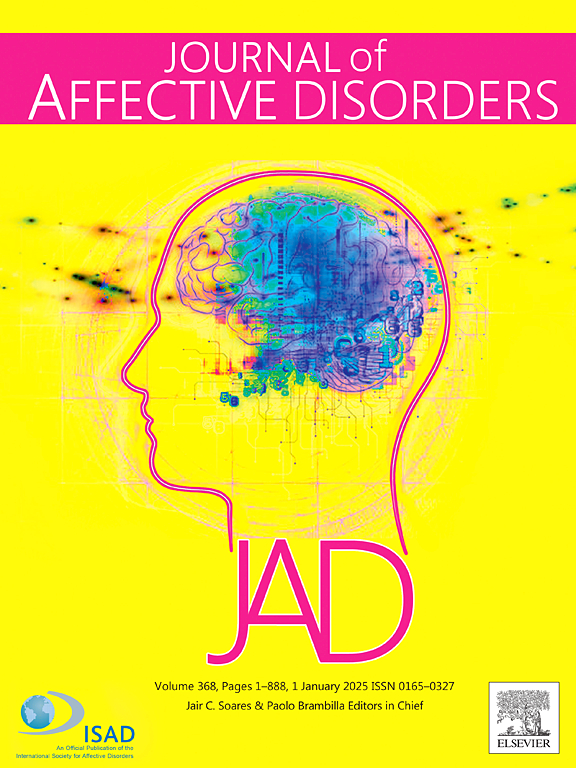Prolonged social withdrawal (“hikikomori”) and its associations with depressive symptoms and suicidal ideation among young adults in Korea: Findings from the 2022 Youth Life Survey
IF 4.9
2区 医学
Q1 CLINICAL NEUROLOGY
引用次数: 0
Abstract
Background
Hikikomori syndrome (HS) is a public health concern. We investigated the prevalence of HS and its association with depressive symptoms and suicidal ideation among young Korean adults.
Methods
Young adults aged 19–34 years was obtained from the 2022 Youth Life Survey, with a total of 14,870 participants. HS was defined as a condition characterized by ≥six months of social withdrawal, including lack of employment or school engagement, lack of social interaction, and confinement to one's home or room, which causes distress to the individual or impairs social functioning. Depressive symptoms were assessed using the Patient Health Questionnaire-9. The presence of suicidal ideation within the past year was evaluated. Logistic regression was performed to calculate odds ratios (ORs) and 95 % confidence intervals (CIs).
Results
The prevalence of HS in the sample was 1.4 % (n = 871). Individuals with HS exhibited a higher prevalence of both depressive symptoms (20.9 % vs. 5.9 %) and suicidal ideation (11.0 % vs. 2.3 %) compared to those without HS. The OR (95 % CI) of the association between HS and depressive symptoms was 3.91 (2.47–6.18) compared with non-HS after adjusting for sociodemographic features. Similarly, the adjusted OR (95 % CI) of the association between HS and suicidal ideation was 5.24 (2.88–9.52) compared with non-HS. A further analysis indicated that depressive symptoms partially mediates the association between HS and suicidal ideation.
Limitation
The cross-sectional study design limits the ability to infer causality.
Conclusion
HS was linked to poor mental health. Policy efforts aimed at identifying young adults with HS and protecting their mental health are required.
求助全文
约1分钟内获得全文
求助全文
来源期刊

Journal of affective disorders
医学-精神病学
CiteScore
10.90
自引率
6.10%
发文量
1319
审稿时长
9.3 weeks
期刊介绍:
The Journal of Affective Disorders publishes papers concerned with affective disorders in the widest sense: depression, mania, mood spectrum, emotions and personality, anxiety and stress. It is interdisciplinary and aims to bring together different approaches for a diverse readership. Top quality papers will be accepted dealing with any aspect of affective disorders, including neuroimaging, cognitive neurosciences, genetics, molecular biology, experimental and clinical neurosciences, pharmacology, neuroimmunoendocrinology, intervention and treatment trials.
 求助内容:
求助内容: 应助结果提醒方式:
应助结果提醒方式:


